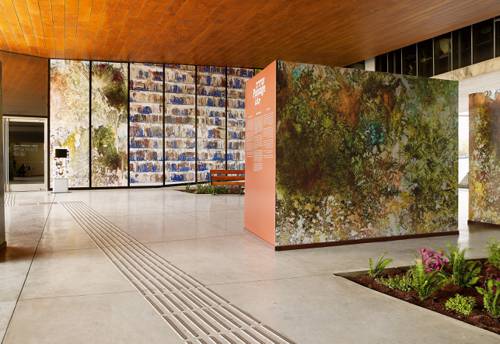
FAQ About The Impact of Art Installations in Environmental Education

What is an art installation?
An art installation is a three-dimensional work designed to transform a space and engage with the viewer in multiple dimensions. Unlike traditional art forms, installations use space and often invite the audience to engage physically or emotionally, creating an immersive experience.

How do art installations contribute to environmental education?
Art installations provide an engaging way to communicate environmental themes by capturing attention, provoking thought, and stimulating emotional connections. By immersing the audience in environmental scenarios, they encourage reflection on ecological issues and inspire a sense of responsibility towards the environment.

Can you give examples of art installations that focus on environmental themes?
Examples include "The Great Pacific Garbage Patch" by Marina DeBris, highlighting ocean pollution, and "Ice Watch" by Olafur Eliasson and Minik Rosing, which used chunks of melting ice to comment on climate change. These installations use visual and spatial elements to raise awareness and provoke action against environmental degradation.

Why are art installations effective in raising awareness about environmental issues?
Art installations are effective because they engage multiple senses and offer viewers a personal experience, making the issues more relatable. They often create powerful visual stories that are remembered longer than facts or statistics, fostering deeper empathy and understanding.

What are immersive art installations?
Immersive art installations are designed to envelop the spectator in the artwork, often through the use of multimedia, physical interaction, soundscapes, and shifting physical structures. These installations aim to provide an all-encompassing experience that fully encompasses the viewer's surroundings.

How does participation in art installations influence environmental behavior?
Participation in art installations engages people intellectually and emotionally, increasing their awareness and understanding of environmental issues. This engagement can lead to a stronger internal motivation to change behaviors, such as reducing waste or supporting sustainable practices.

Are there any art installations that promote sustainability practices?
Yes, installations like "Plastic Ocean" by artist Tan Zi Xi, which uses plastic waste to simulate an ocean environment, highlight sustainability challenges and advocate for reduced plastic use. Such installations often serve as both educational tools and calls to action for adopting more sustainable lifestyles.

What role do artists have in environmental education through installations?
Artists serve as mediators and interpreters of environmental concepts, using their creativity to convey complex issues simply and accessibly. They can inspire, challenge perceptions, and motivate changes in attitudes and behaviors towards the environment, making them pivotal in educational outreach.

Can art installations change public perception about environmental issues?
Yes, by presenting environmental issues in new and impactful ways, art installations can challenge existing perceptions and encourage viewers to reconsider their attitudes and responses. The emotive power of art can cultivate empathy and promote a deeper understanding of the challenges faced by the environment.

What is the importance of location in environmental art installations?
The location of art installations is crucial in enhancing context and relevance. When placed in spaces that directly relate to the installation's theme, such as a beach for a marine pollution artwork, it strengthens the connection between the art and the environmental message, enhancing its impact.

Do art installations integrate technology for environmental education?
Many contemporary art installations incorporate technology such as augmented reality, virtual reality, and interactive components to enhance engagement. These technological elements can simulate environments, visualize unseen ecological processes, and offer novel ways to understand and interact with environmental data.

How do schools use art installations to teach students about the environment?
Schools often incorporate art installations into their curricula to stimulate creative thinking and discussion about environmental issues. These installations can be part of projects or workshops where students create and present their works, fostering experiential learning and expanding their environmental literacy.

What are environmental art installations?
Environmental art installations are artworks specifically designed to address and comment on environmental issues. They often incorporate materials, themes, and messages related to ecology, sustainability, and conservation, with the intent to educate, alarm, or inspire action among viewers.

How do community-based art installations contribute to environmental education?
Community-based art installations engage local participants in the creation and presentation of artwork centered on environmental issues affecting their specific region. This participation not only raises awareness but also fosters a sense of ownership and stewardship about environmental preservation and action within the community.

Do art installations focus on specific environmental issues?
Yes, art installations can target specific environmental issues such as climate change, biodiversity loss, deforestation, and pollution. By focusing on specific themes, they often aim to bring visibility to particular challenges and ignite focused discussion and action among audiences.

What materials are commonly used in environmentally themed art installations?
Materials for environmentally themed art installations often include recycled or sustainable materials such as plastics, metals, or organic matter. Using these materials not only emphasizes sustainability but also creates a direct link between the artwork and the environmental message being conveyed.

How are art installations different from traditional educational tools in environmental education?
Unlike traditional educational tools such as lectures or textbooks that convey information factually, art installations engage viewers emotionally and sensorially. They allow for personal interpretation and emotional engagement, making them effective at creating a memorable and impactful learning experience.

Are virtual art installations used in environmental education?
Yes, virtual art installations leverage technologies such as virtual reality to explore environmental themes. They allow users to experience immersive environments from remote locations, making them accessible to a broader audience. These virtual experiences can highlight important issues like climate change in an engaging and interactive way.

Can art installations for environmental education be temporary or permanent?
Art installations can be both temporary and permanent. Temporary installations might address immediate environmental issues or events, while permanent installations can serve as ongoing educational tools. The duration often depends on the intended impact, available resources, and environmental context.
